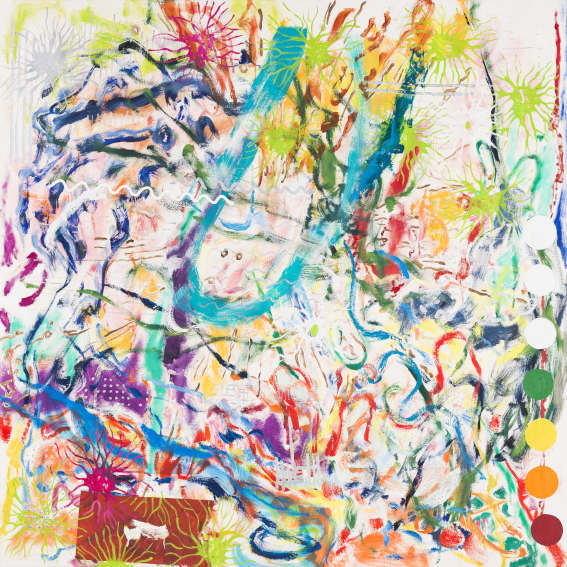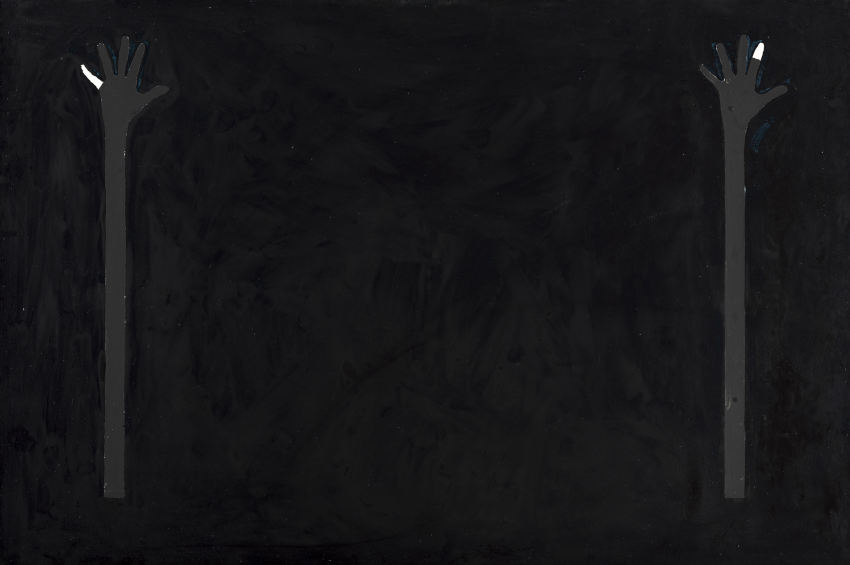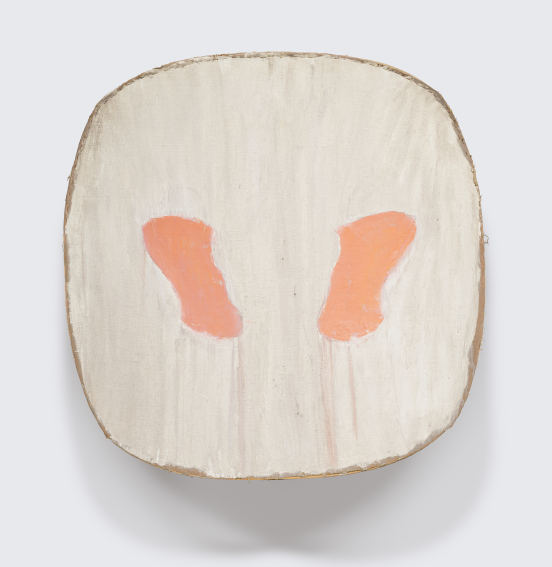
The Seminal American Painting: The Eighties Exhibition, Revisited
In 2018, I declared Who RU2 Day: Mass Media and the Fine Art Print, at the Cleveland Museum of Art, the most important exhibition in America. Today, I again believe the most important American exhibition to be at an Ohio museum—this one titled American Painting: The Eighties Revisited, at the Cincinnati Art Museum. The Cleveland show was important because it challenged visual literacy at a time when image saturation was reaching its highest point ever, and the human ability to translate visuals into sensible thoughts and actions was reaching its lowest point ever. The current Cincinnati show is important for similar reasons. It directly challenges the widespread embrace by contemporary audiences of narrative, content heavy art, proposing instead the enduring value of abstraction. As its title suggests, it is a recreation of an exhibition that opened more than 40 years ago. The original debuted at the Grey Gallery at New York University in 1979, and featured 41 works by 41 artists who were almost all unknown at the time. The curator was the renowned critic and educator Barbara Rose, who sadly died from breast cancer in late December 2020, just before this tribute to her foresight opened. That original exhibition was trashed by critics. Despite critical outrage, plenty of sympathizers expressed their support, including a host of curators and museum directors who enthusiastically toured the controversial show to more than a dozen cities around the world. The most important support came from Ronnie and John Shore, a Cincinnati couple who were then a decade into what would become a 53-year pastime of collecting art. Considering it important that a show of such historical importance be kept in tact, and believing it essential that artists find encouragement in material support, the Shores purchased the entire exhibition. A gift of that purchase to the Cincinnati Art Museum is what made the current recreation of the original show possible.
The Controversy
To some readers, it may seem absurd that it was once controversial to express a belief in the value of abstract art. To many others, however, it sounds a lot like the same pushback abstract artists continue to experience today. Traditionalists seem to always want their art to tell stories, and to show easy to recognize scenes of the so-called real world. Especially amongst elite patrons of the arts, it has always been believed that the purpose of art is to show an ideal of what human culture should value and imitate. Abstract artists do not necessarily disagree with that belief. However, they certainly disagree with the limitations of expressing ideals through mimicry. Abstraction is a path towards something universal; something unseen; something inexpressible with existing lexicons. That is a difficult path for a lot of people. The economy, therefore, tends to reward artists who offer simple, straightforward lessons to the masses about what they should love and hate.

Nancy Graves (1939–1995), United States, Strobia, 1978, oil and encaustic on canvas, Gift of Ronnie and John Shore, 2018.195, © 2019 Nancy Graves Foundation / Licensed by VAGA at Artists Rights Society (ARS), NY
Aside form the general complexity of abstraction, the other central complaint critics expressed about the original American Painting: The Eighties was that the artists in the show were new to the scene. They wondered how any curator could claim that these unknown painters were suitable representatives of the entire nation at that moment? In the case of several of the artists—such as Elizabeth Murray, Sam Gilliam, Nancy Graves, Dennis Ashbaugh, Frances Barth, Howard Buchwald, Louisa Chase, Rachelle Epstein, and Ron Gorchov—they indeed went on to become very successful. Yet, not every artist in the exhibition could say the same. Many of their names, I am embarrassed to say, remain completely new to me today—such as Susan Crile, Elaine Lustig Cohen, Catharine Warren, Peter Pinchbeck, and Susanna Tanger. However, the paintings these artists contributed to the show are shockingly fresh looking. I can, in fact, name several artists who have since copied their style. They may not have become famous, but they were clearly influential.

Lois Lane (b. 1948), United States, Untitled, 1979, oil on canvas, Gift of Ronnie and John Shore, 2018.213
The Visionary Barbara Rose
As for Barbara Rose, the last thing she needed was validation from critics. In 1965, when she was only 29 years old, Rose wrote one of the most enduring essays ever published about the lasting value of abstract art. Titled ABC Art, it was one of the earliest critical attempts to define the movement that would later be called Minimalism. Quite unlike the understanding many curators and viewers have of Minimal Art today—that it is elegant, simple, unobtrusive, and pleasant to look at—Rose considered Minimal Art at its best to be “difficult, hostile,” and “awkward.” She called it an “art of denial and renunciation” rooted in an almost monk-like asceticism. Describing it as a non-egotistic, at times even mystic antidote for Pop Art, she placed it into a lineage that included philosophers, novelists, choreographers, and artists such as Kazimir Malevich and Marcel Duchamp.

Ron Gorchov (1930–2020), United States, Witch, 1979, oil on linen, Gift of Ronnie and John Shore, 2018.219
Rose made multiple other enduring contributions to art theory. She coined the term Neo-Dada; wrote an influential easy establishing Lee Krasner as the most overlooked Abstract Expressionist; taught art to both prison inmates and students at Yale; wrote about abstraction for the most influential art publications of her era; and penned monographs documenting the careers of nearly two dozen female abstract artists. Her credentials in the 1980s were as undeniable as they are today, but she was seen as a radical nonetheless. Then, as now, I guess people just really loved figurative art. Even today, abstract art history is rarely taught in schools (including art schools), and even when it is, its political and social relevance is passed over by professors who themselves have never been adequately taught. Nonetheless, for untold millions of viewers abstraction continues to be an enduring, even essential part of our relationship to art and life. Thanks to intrepid collectors like Ronnie and John Shore, bold curators like Barbara Rose, and courageous institutions like the Cincinnati Art Museum, this vital aspect of human culture continues to thrive.
American Painting: The Eighties Revisited will be on view from 12 March through 11 July 2021, pending local COVID-19 restrictions.
Featured image: Sam Gilliam (b. 1933), United States, Tequila, 1979, acrylic and mixed media on canvas, Gift of Ronnie and John Shore, 2018.194, © 2019 Sam Gilliam / Artists Rights Society (ARS), New York
All images used for illustrative purposes only
By Phillip Barcio






